“In terms of politics and culture, we have accumulated a lot since ’48; but we still find ourselves in ’48.” (B. Fondane, Critical Spirit in Romanian Culture.)
It’s no coincidence that Piotr Gajda talks about “the fight for the bones” in a poem in which he tries to articulate the imperative of writing politically engaged poetry today. It’s in “The throat has dried” from the Pavaj booklet (2018). I went through it in a packed train, on the way from Tarnow to Warsaw. I was still under the impression of the “Spring (winter, summer, autumn) of the people” exhibition that had just ended and forced me to think about the return of state necropolitics in our region. Gajda’s verse went off in my ear like a cannon. Similar sounds were heard at the exhibition, though reduced to deafening video and audio recordings.
The exhibition which is curiously interwoven with the territory of today’s Romania was a collaboration between the BWA gallery and the Tarnow Regional Museum. BWA, meaning Biuro Wystaw Artystycznych – the office of artistic exhibitions – is one of the many active outposts for contemporary art, part of a network founded during the Polish People’s Republic. It can be speculated that BWAs were thought as a kind of Deleuzian-Guattarian hybrid rhizomes, which, although funded by the state, have a rather high degree of autonomy. BWAs became both the cells of dissemination from the center to the province, showcasing the novelties in the world of visual arts, coming from the West, and the East as well, and this was their primary purpose: increasing people’s access to culture, especially those farther away from the capital, simultaneously pushing new talent to the center.
I emphasized these details because although the title “Spring (winter, summer, autumn) of the people” makes us regard the history and the formidable period around 1848-49, and the starting point of the exhibition is a major display of historical painting – fragments from the Transylvanian Panorama, less known in Romania – in fact, the event brought up issues that still pertain to current artistic practice, such as the tendency of artists and patrons towards monumentalism; realism that everyone can understand, but also pseudo-documentarism or fake news and images; visual art as a medium for political propaganda; the assault and the inspiration of history; (self) destruction of art objects; defragmenting and recycling pieces of art objects; erasing the dividing line between artist and curator; the financial insecurity of artists; collaborative practices, including international ones, which can be fulfilling and result in exceptional achievements, but can also be congruent with the troubles of loan sharing; artists’ sources of income; failure to comply with the terms of the agreements, such as the delay or even non-payment of fees by those who commission the works of art or by the artists themselves who become project managers or directors; the huge pro-bono work of art workers and, of course, last but not least, immigration, and more importantly, the contributions of newcomers to host cultures.
The pretext for the exhibition were several concurrent anniversaries. First of all, 170 years since the Spring of the people – essential for Romania, but, as you will see in the following, it’s not just about a particular event or period, but also the current territory of Romania. In 1848-49, in Transylvania, the Hungarian Revolt took place – one of the few emancipatory revolutions in Europe that evolved into a successful military opposition for a longer period. The 225-year anniversary of the birth of Tarnowian Józef (Juzef) Bem, General of the Uprising, as well as the fact that 90 years ago, Bem’s worldly remains were brought to Poland from … Aleppo.
Like I said, the core of the exhibition is made up of the dozens of fragments that are known to have been preserved from the so-called Transylvanian Panorama, worked by Jan Styka’s team, exhibited in two rooms at the Tarnow Train Station and at the Strzeleckich Palace, the current residence of the BWA Gallery. Although the exhibition also included works, presentations and performances by contemporary Hungarian, Romanian, Turkish, Ukrainian and Polish artists, the historical dimension does not fail to capture the attention of visitors who were brought up within the Romanian culture.
Although the Panorama of Transylvania was fragmented, its pieces are impressive. Several dozens of them are on display in the collection of the Regional Museum in Tarnow. Others were borrowed for exhibition from various Polish museums. Some pieces have been in private collections. For decades, the museum has been auctioning off fragments of the work in hope that it will someday rebuild the original canvas. So far, the fragment with General Bem, the protagonist of the battle, has not been rediscovered. Done in a fast pace, in Lvov, today’s Ukraine, in the space of a few months in 1897, just like Panorama Racławicka, Panorama Siedmiogrodzka (Sevenmountains, as the Poles call Transylvania) was about 120 meters long and 15 meters in height! In 1908 the work disappears. After about 70 years the first few pieces are discovered along with the undeniable fact that the work was sectioned in about sixty fragments, which could function as autonomous paintings.
The work was commissioned due to the enormous success of Panorama Racławicka, which can still be admired today. At one point, it also reached Budapest where it was visited by about 800,000 people. The Hungarian dignitaries, realizing the propagandist potential of this artistic medium, decide to commission the artistic director of the Panorama Racławicka – Jan Styka and his numerous international team of painters to do a similar work. The piece was to glorify the bravery of the Hungarians who rebelled in 1848-49. It was the eve of the 50th anniversary of the Spring of the People. Styka accepted. After several negotiations, it was decided that that the panoramic work would depict the Battle of Sibiu, in which the Insurgent Army steals a victory from the Austrians. Obviously, not the one from March 22nd, 1442, between Iancu de Hunedoara and the Ottomans, which is still discussed in history classes in Romania, but the battle of March 11th, 1849, also called the Liberation of Sibiu. Its hero was General Józef Bem, nicknamed by the Hungarians Bem apó – Father Bem.
The BWA gallery was housed in a waiting room at the Tarnow station, where one of the Transylvanian Panorama cutouts, the famous “Car cu boi” (Cart with Oxen) was exhibited. Though not necessarily by chance, the painting was among a few other works related to another exhibition, entitled “Against the War” which referres to the Second World War. It was placed among the fragments of memories from Nazi concentration camps and other more contemporary troubles with the traumas of war, respectively a discourse that opposes the glorifying view which is specific to the panorama as a genre.
Next to a pair of oxen was painted an old peasant dressed in a traditional celebration port, possibly Romanian. The painting was not designed with ethnographic accuracy in mind. It is primarily based on color ratios, energetic brushstrokes, and maybe even randomness. It’s a technical trick which somehow subtly undermines from the very start the documentarism and propaganda of the entire work, while simultaneously giving it a certain vitality. The old man could have been Romanian, Hungarian, Szekler with Saxon ancestry. It doesn’t matter anymore. He’s a character with a curious history. He seems to be the only live-painted figure in the Transylvanian Panorama. Styka himself may have done it. It is said the team of painters met him in the area where the battle took place, during their documentation trip. I can see them now, sitting in a circle with their easels prepared and suddenly there comes a cart with an ox and an old man on the way to the fair. The man claimed that he witnessed the battle in Sibiu. We can no longer verify if he really did, but it’s certain that he remained immortalized on a piece of painting that managed to not get lost in history.
The Taking of Sibiu was one of the 33 victories of General Bem, adventurer, engineer, inventor, artilleryman, businessman, polyglot, strategist, politician, freelancer … He also conquered Brașov and reportedly freed all of Transylvania and Banat from the Austrians. He was defeated only when the Russians, the trusted allies of the Habsburgs, intervened. A curious and rather unknown fact is that both revolutionary and tsarist armies had hundreds of Polish soldiers and officers on their side. Bem commanded the Transylvanian Polish legion and there was also the legion of General Józef Wysocki. Three regiments of riflemen from Zamoșci were fighting on the Russians’ side.
In addition to the battles, Bem managed to organize a weapon manufacturing industry in Transylvania. He set up gun foundries and gunpowder factories. Under his command, the Insurgent Army tripled its number to 30,000 and about 3,000 could have been Romanian peasants! Although not willingly recruited, Bem would have treated them as respectfully as any other rebels [1]. The monument of Bem from Târgul Mureș was one of those demolished after the Great Union in 1922.
He obviously suffered some losses too. The victory in Sibiu followed, despite the defeat of February 4th, 1849 in Vízakna, today Ocna Sibiu. On July 31st, 1849, he was defeated in the battle of Albești, near Sighișoara. The Insurgent Army registered approximately 1,200 dead. After the fight, the revolutionary poet Sándor Petőfi also disappeared. Although he did not participate in the taking of Sibiu, he is included in the Panorama of Transylvania. Hungarian withdrawals and defeats followed until, on August 13, 1849, the revolutionaries surrendered definitively at Șiria (what a curious name for a town!). With a few exceptions, the commanders of the revolutionary troops were tried and executed for high treason. However, Bem together with a few officers manage to escape. He flees to the Ottoman Empire, where he immediately converts to Islam. It may have been an act of protest against the Russians, who not only defeated him in Transylvania, but also controlled his native Lehia, but also against the Austrians, who controlled Galicia. Several Hungarian officers who accompanied him also converted.
Conversion was a widespread practice among educated Poles. The Ottomans respected both the sword and the skills of Christians and offered them careers in the army and industry, provided they switched to Islam. After a time in which he was treated with suspicion, he still gained the Ottomans’ trust. He becomes a senior official under the name of Murat Pasha. Murat’s name is derived from the Persian word “mordd” which means the desired one. In Polish, however, when written with one d, it means “slaughter”. He settles in … Aleppo. Once again, he establishes gunpowder factories. He becomes a hero when, with only 1200 soldiers and 16 cannons at hand, he defends the city besieged by an army of about 30,000 Bedouins dissatisfied with the Ottoman Administration. He later succeeded in establishing himself as a reformer of the Ottoman Army and helped to strengthen the borders of the Empire. He was also awarded the title of general. Shortly after receiving these honors and when he was planning to set up an artillery school in Aleppo, he finally dies of malaria. An unusual fact, which led some to speculate he may have been killed with a proto-biological weapon.
Once it gains independence, the Polish government initiates a series of repatriations of the corpses of the great Poles. That’s how General Bem’s lifeless body reaches its hometown of Tarnow. There is only one finger missing from one of the many fights. Re-burial, however, does not take place in the peace it, perhaps, deserves. The corpse creates buzz among the city’s clergy. It seems a large portion of the church believe rumors that Bem was … a Jew. They oppose his burial in the place destined for heroes. Then comes the idea of a funeral “in the air”. The coffin was placed in a mausoleum – an exceptional necroarchitectural work signed by Adolf Szyszko-Bohus – in the middle of a lake in Strelețchih Park, with six columns that support the coffin. High dignitaries and diplomats from Turkey, Poland and Hungary attend the reburial. There are inscriptions in three languages – Polish, Hungarian and Arabic – in the mausoleum. Bem’s Mausoleum has become somewhat of a reference for the BWA gallery exhibitions, which are located just a few hundred steps from the Mausoleum.
Bem is still of actuality. He cannot be ignored. On the one hand, Bem is the hero of contemporary musicals, and on the other, although ultra-cosmopolitan even in death, he’s been appropriated by politicians and still continues to be. Currently, his figure has become a symbol of the Hungarian far right, which is connected internationally, for example, to Poland. The “Spring” curators tried to break the vicious circle in which the general slept.
But before we enter the BWA headquarters, we must also pass the “Gate” – a naive metal art installation, painted in the colors of the rainbow, welded by a peasant, Adam Pesta. However, the work, previously exhibited in the Museum of Contemporary Art in Warsaw, is presented as belonging to Daniel Rycharski. The artist has somehow included it in the discourse of contemporary art. It’s a rural version of a triumphal arch. It came to be on the occasion of 150 years since the abolition of slavery in Galicia, one of the consequences of the revolutionary movements of 1846 and 1848 in the area. But the fact that the Spring of the People abolished slavery is not a trend. It does not occupy an important place in the current commemorative menu. That is why, the “Gate” works only partially as a mnemonic probe. Rather, it provokes discussions about today’s ideological struggles. The stylized multicolored rainbows are like sand in the eyes of the far-right. Its weakened state highlights social and economic means of exclusion, including in the peripheral areas.
Passing the Strzeleckich palace threshold, as soon as you enter the hall, you can hear some shouts or commandments pronounced in a beautiful, stern and rhythmic manner. For many visitors, it probably sounded incomprehensible. These are fragments of the most invisible work in the exhibition. It belongs to Ukrainian Nikolay Karabinovych and is titled “Che bella voce!” – What a beautiful voice! (2019). The artist recorded the expression “Soldiers, attack!” In the languages of the armies that Bem commanded. It resonates for short periods of time in the gallery. It’s a commentary on what sociologist Klaus Teweleit observed about the way military (or artistic) groups have a function of generating communities. They are consolidation machines. One detachment, one man, one rhythm. They demonstrate power, precision, order and a certain type of masculinity. The squad becomes a model of the nation. Just before the fight, the collective body freezes and nervously waits. But the perfect machine can be dismantled at any moment, sometimes under the threat of aesthetics. The artist, in fact, shares an anecdote he picked up from Mladen Dolar’s book “The Voice and Nothing More” (2006). “In the middle of a battle, a company of Italian soldiers awaits their order in the trenches. The commander screams – Soldiers, attack! – The soldiers stay put. Nobody is blinks. They all look at him stunned. The commander screams the order again. And again, again, with a rising voice. At one point, a sergeant stands up and exclaims – What a beautiful voice!”
“Noise from below the first layer of soil” is the title of the multimedia diorama created in 2018 by Funda Gül Özcan. It immediately draws the visitor’s gaze. The curators argue that it can be interpreted as a retelling of the besieged cities’ fate – Aleppo, Sibiu or Vienna and that’s exactly what it is. It makes me shout – Biji Rojava! – It is like a multidimensional cognitive model of mental manipulation of images but also of the consumption of these collages through which we generate new narratives. A common mechanism, but often used at society level by historical revisionism. Funda Gül Özcan creates a series of micro-histories, a kind of flashes in which sounds, digital images and objects overlap, generating a complex and visual poem of demolition. Obviously, the viewer acquires it in terms of their own personal sensibility, affective reception and emotional imagination.
Then we see the fragments of the Panorama in which the Honveds – Hungarian soldiers – attack the Austrian army. They are spread on poles of white birch – an allusion to the missing fragments of the Panorama which only represented landscapes: neutral spaces, lacking an explicit propagandist message, which respectively makes them less commercial and probably the reason why they disappeared forever.
Commemorative medals with visualizations of Jozef Bem’s face were scattered on the walls. It’s unknown exactly what he looked it. The faces are, as it often happens, the result of exercises in artistic imagination.
The life of national heroes does not end with their death, and their names are instrumentalized in rewriting history, as we find out from an interview with writer and political scientist István Rév, published in the exhibition catalog. Because it’s rumored, I dare to believe that it will be published online. Rév speaks, among other things, about continuing excavations at the place where Hungarian heroes are believed to have perished, like Petőfi, near Arad.
We see the same thing eminently illustrated in the sculpture of Attila Csörgő (Ciorgo). The artist is of Hungarian origin and settled in Poland for years now. The artist bends the material from which a cube is assembled in such a way that he obtains a geometrical figure that is totally different from the base cube. The only common thing between the two figures is that they have the same square area. A hint to the white cube, an ideal of the gallery, where content can be reinterpreted and reused.
The exhibition was accompanied by a number of performative events. Experimental music was not absent throughout the artistic party. Kornelia Binicewicz, from Ladies on Records, approaches the idea of history often being “improved”, “corrected” or “cleansed” using the DJ booth. Unlike history, music, as a way to narrate, cannot be easily corrected. It’s like a stream of consciousness that incorporates historical and cultural influences from a multitude of sources and records. The artist has compiled contemporary psychedelic pieces by Turkish composers, derived from Anatolian folk music with Polish and Hungarian rhythms of the 1970s, often based on folk songs, national poetry or a kind of post-mythological nostalgia for a borderless world, says the artist.
During the closing, the BWA gallery also had Jacek Staniszewski. The artist tried to recalibrate the cacophony emitted by the degradation of objects that missiles target and hit, resulting in a deafening inaccessibility. He discovered materials containing the sounds of explosions in all kinds of professional and amateur documentary recordings made during real military conflicts or on film sets. Respectively, we can talk about a certain deafening aesthetic added to the fun. He played his mix with the projections of the respective videos. Bem was probably one of the first composers of this genre and conductors of the deafening orchestra of cannons.
World-renowned artists, but more importantly, Sibiu locals, Lia and Dan Perjovschi held a seminar in which they focused both on their artistic practice, its history, international recognition, the responsibility that comes with recognition, but also on the need to give something back and they presented collective and community actions in which they were and are still involved. They also held an illustrations workshop. These were printed in zine form. They also talked about their home in Sibiu, which works both as an open art workshop and as a museum. It includes an archive compiled from critique volumes, reviews, online posts, but also items bought in museum stores around the world. The Perjovschi Museum consists of seven sections: earth, body, art, culture, knowledge, science and universe. The museum in question is a magnifying glass through which we can observe the production and representation of knowledge. They also spoke about the Horizontal Newspaper, also known as Perjo’s Wall, a kind of (unfolded) Romanian Panorama. It’s about how walls begin to reappear after a period of demolition. But at least the walls can become surfaces on which to draw and, respectively, protest. This can no longer be done if the wall is barbed wire, or worse, razor.
Aleksandra Kubisztal held a workshop where children had the opportunity to understand the illusion of being a main participant to the event represented in a panorama. Together, the participants created their own version, a smaller clone of the Transylvanian Panorama.
Bem has become famous in his lifetime. Countless waves of countless poets who were educated on various cultural lands praised him. In the exhibition catalog, we find, in fact, two poems apparently dedicated to this individual.
Bags of bones
What luck! / He found his bones. / The skull is also in the bag. / He holds the bag in his hand, like the other bags held in other trembling hands. / His bones resemble thousands of bones / from a collective grave. / His skull does not resemble other skulls. / The two eyes, / now only the deserted orbits, / with which he saw more than he should have seen … / The two ears / with which he heard the music that played his own story. /
Dunya Mikhail
The Martyr
No … he didn’t die. / Behold … we bring him, / so celebrate, / o, green hills, o, banners that fill the space between earth and sky, / a procession of consecration … behold, / behold … we bring them from last call, / from the remnants of our hope, / so celebrate. / Do not light candles, / because the house is lit. / Do not wash his wounds, / because this wound was his pilgrimage, / and this was native to him, / and this proud house of blood. (…) / Do not cry. / Dive into his silence / as in a story. / The most beautiful, which he left us, / and so you will be born through his death (…)
Buland al-Haidari
Currently a journalist and poet of Iraqi origin, a refugee established in the United States, a fugitive from Sadam Husein’s regime, Dunya Mikhail probably wrote these lyrics about someone else. Buland al-Haidari, an Iraqi poet of Kurdish origin, probably had something else in mind as well, marking, it seems, an important turn in contemporary Arabic poetry. Biji Rojava!
Like military strategists, the curators hit the nationalist-patriotic hyper-realistic flow to which the figure of General Bem is continually sucked in an attempt of reclaiming, reappropriation and as far as I can tell, they were victorious. This fact was perhaps best observed in the most proper way in the culinary performance of Dorothy Podlaska, entitled “The General’s Body”. The role of a hero, says Podlaska, is to give to others, to sacrifice for the good of all. General Bem’s body created by the artist from small culinary delicacies was collectively consumed by the participants at the opening in a symbolic gesture of sharing. His heart was served. The participants actually managed to cannibalize the general’s body. And not just the body, but also the milk that the general sucked from the breast of the mother or nurse, including the unswallowed drops, flowing unseen on the cheeks and falling to the ground, to close the quote from Gajda.
Still, why was the Transylvanian Panorama cut out? There are several explanations. Hungarian patrons, who commissioned the work, did not want to buy it although it was also publicly displayed in Hungary. Some historical inaccuracies that have crept into the Panorama, such as Petőfi’s presence in the battle of Sibiu, may have been invoked. There were also those peasants, too numerous and a little too frighteningly painted with their scythes and forks a little too sharp. The identity of the oppressed class in the painting was too pronounced. The fragment with the peasants was preserved. On the other hand, it seems that the panoramas have begun to lose popularity since the spectacular progress of the cinema. Movie killed the panorama stars. In the end, Styka opts to market the fragments from the Panorama which, once sold off, disappear in unknown directions. In the meantime, Europe would enter a shaky period and the world would soon forgotten about the Transylvanian Panorama.
Curators: Krzysztof Gutfrański, Monika Weychert; Design and arrangement: Matosek/Niezgoda; visual identity: Jakub de Barbaro. Participants: Kornelia Binicewicz, Attila Csörgő, Nikolay Karabinovych, Funda Gül Özcan, Dan Perjovschi, Lia Perjovschi, Dorota Podlaska, Daniel Rycharski, Jacek Staniszewski. The authors of the Transylvanian Panorama /The battle near Nagyszeben [Sibiu]): Michał Gorstkin-Wywiórski, Tihamér Margitay, Tadeusz Popiel, Zygmunt Rozwadowski, Leopold Schönchen, Béla K. Spányi, Jan Styka, Pál Vágó
[1] Gelu Neamţu, Hungarians fighting for the Romanian Revolution of 1948-49 in Transylvania
Translation by Bogdan Scoromide
POSTED BY
Teodor Ajder
Teodor Ajder was born in Chișinău. He studied psychology at Babeș-Bolyai, Cluj-Napoca, and got his master's degree in education sciences and his doctorate in media, information and environmental sc...
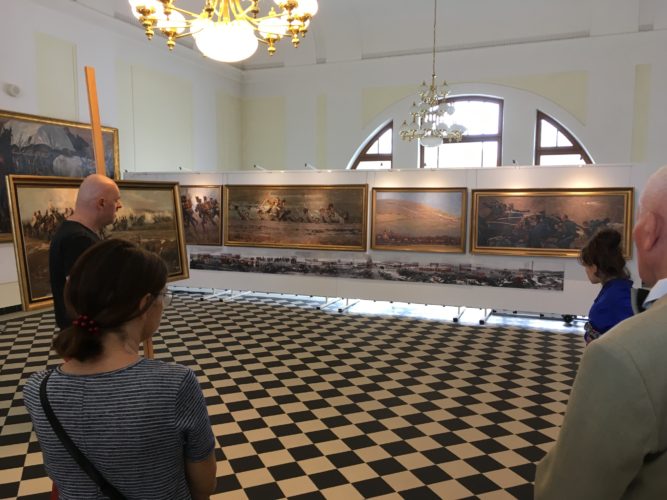
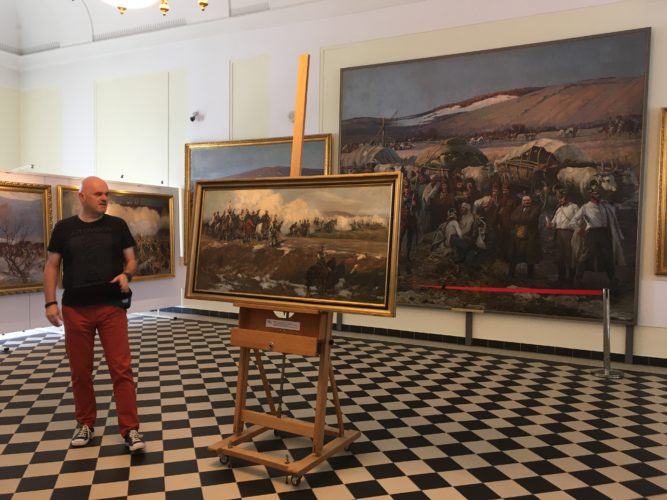
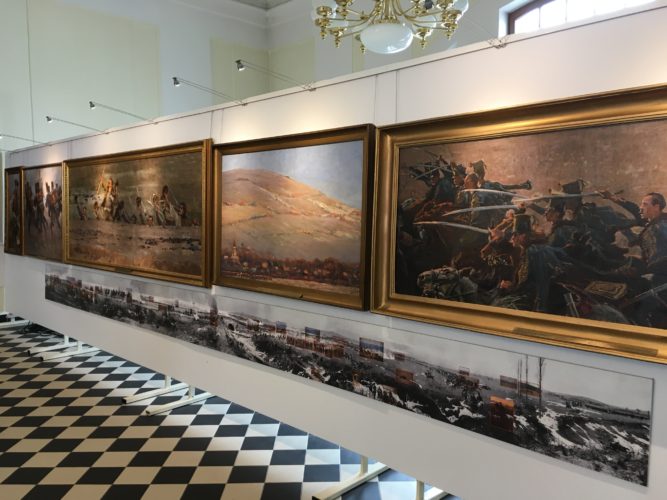
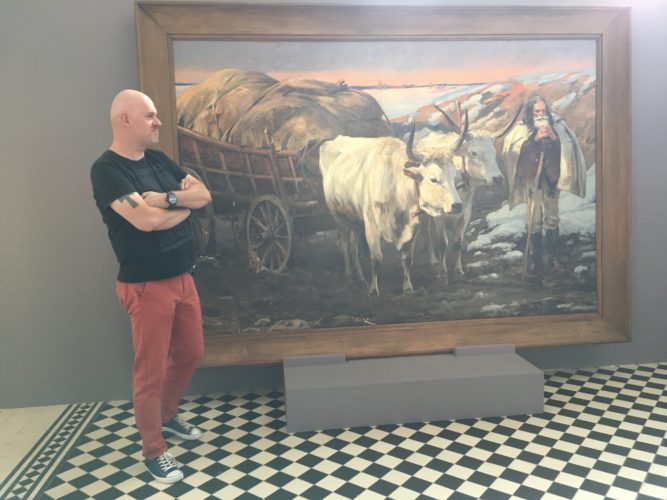
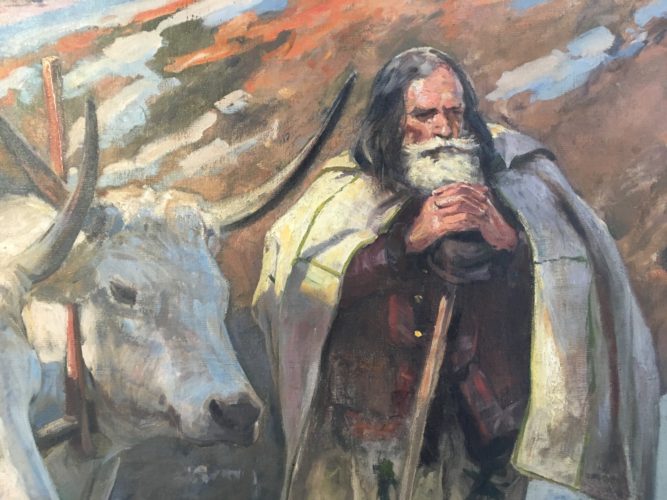
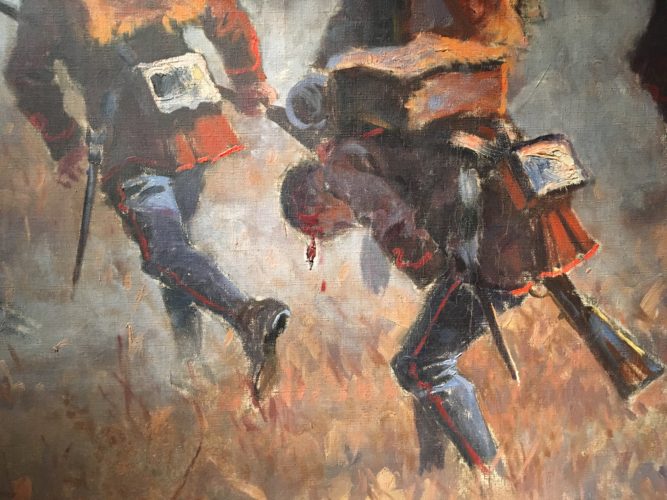
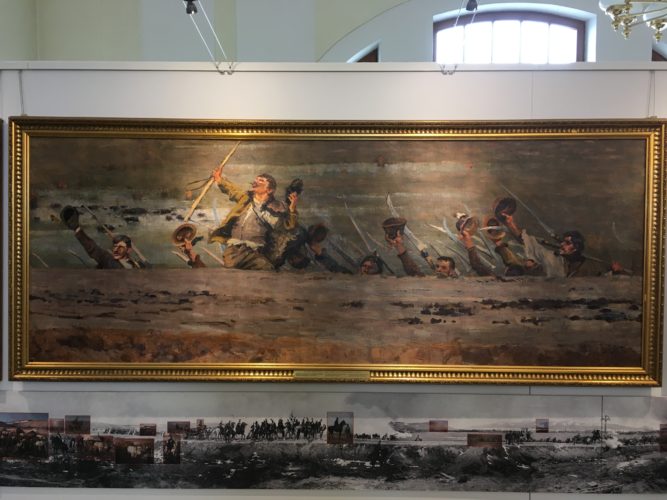
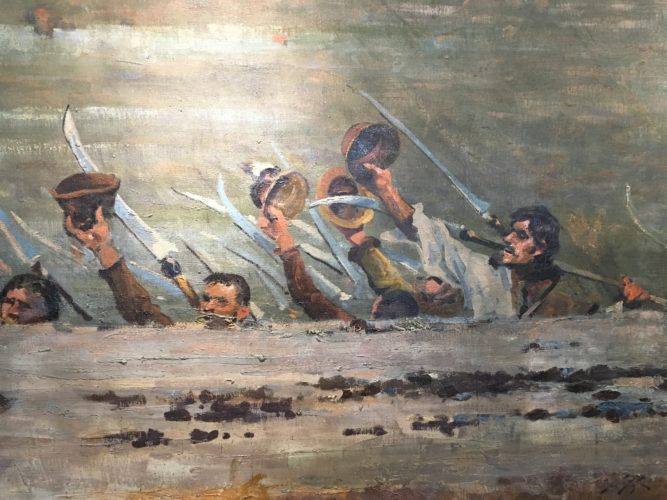
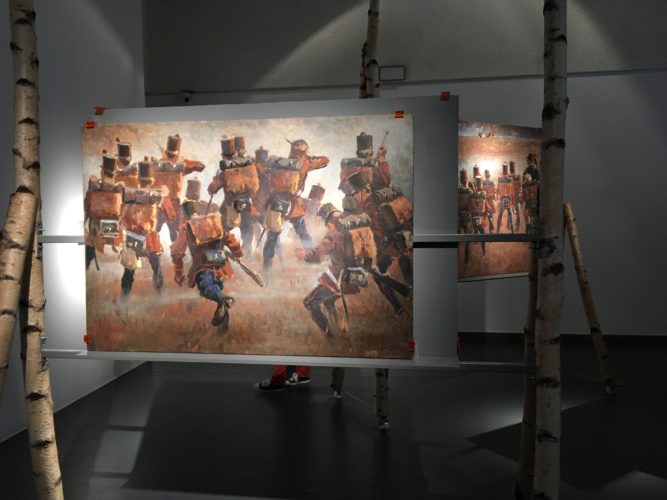
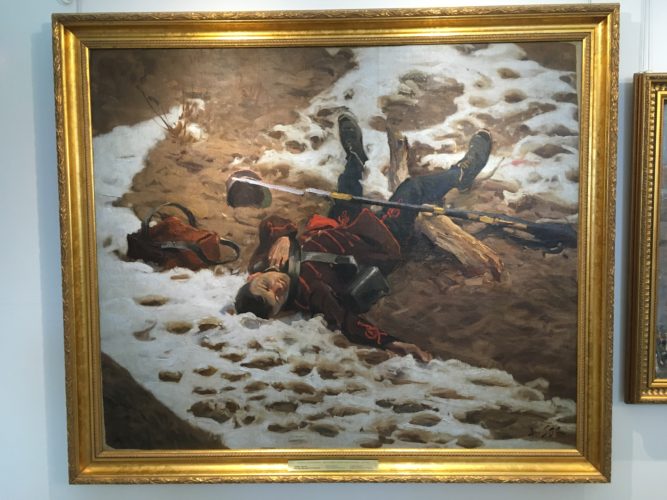
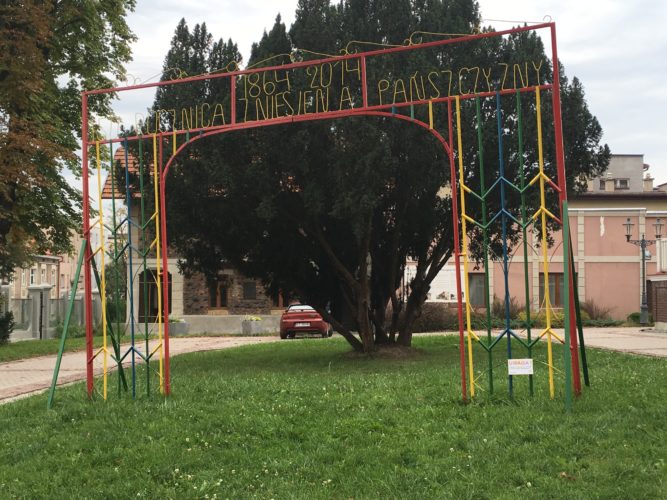
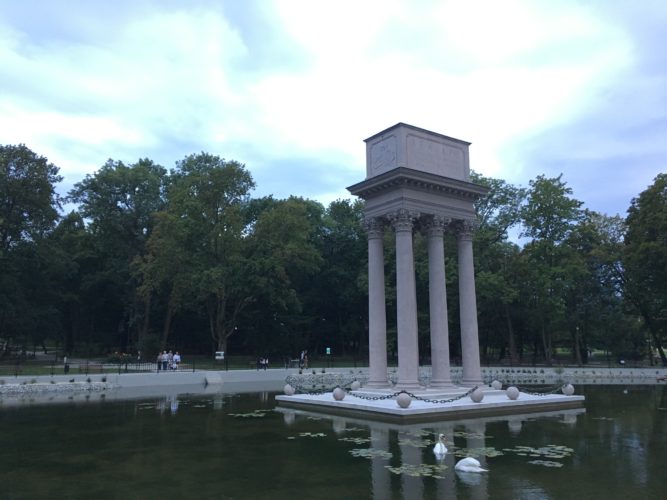

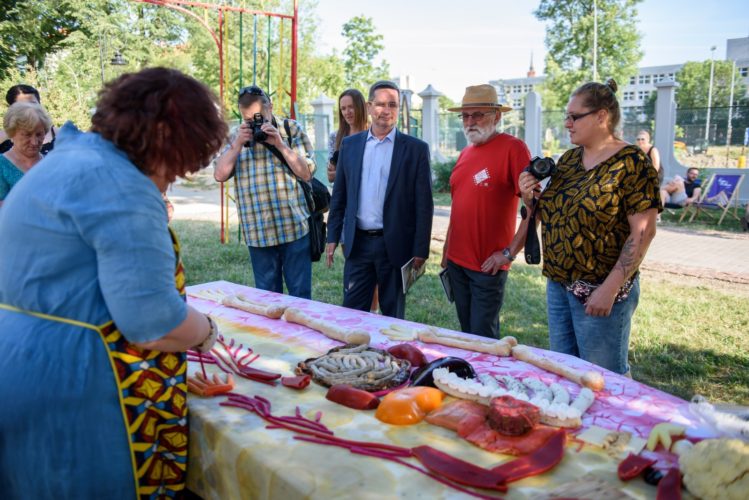

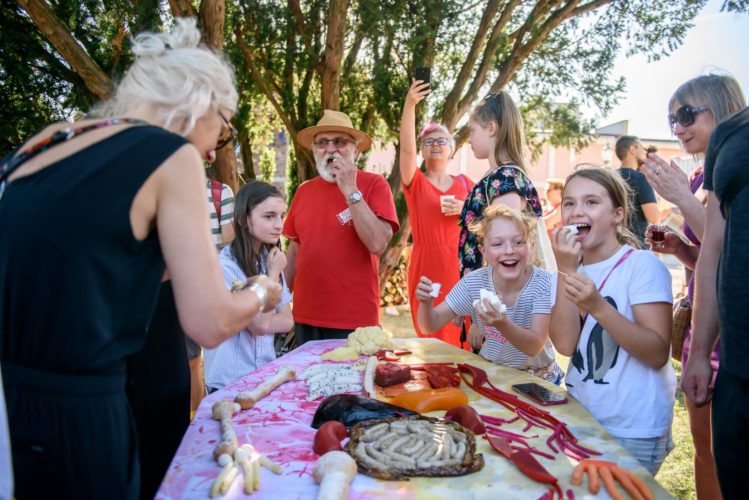
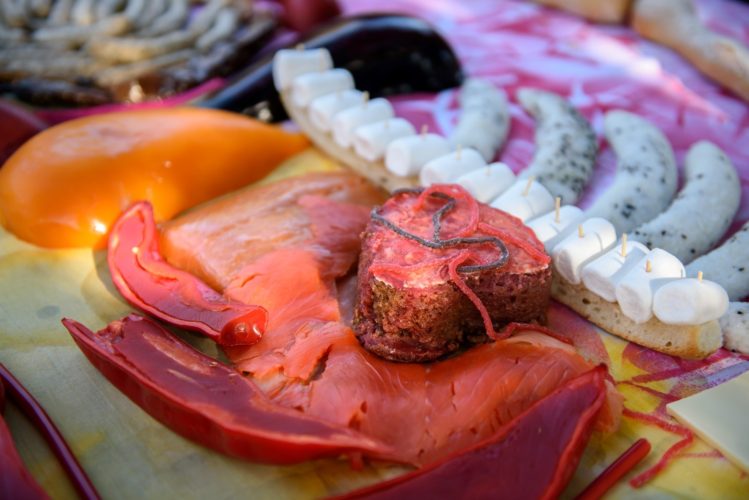


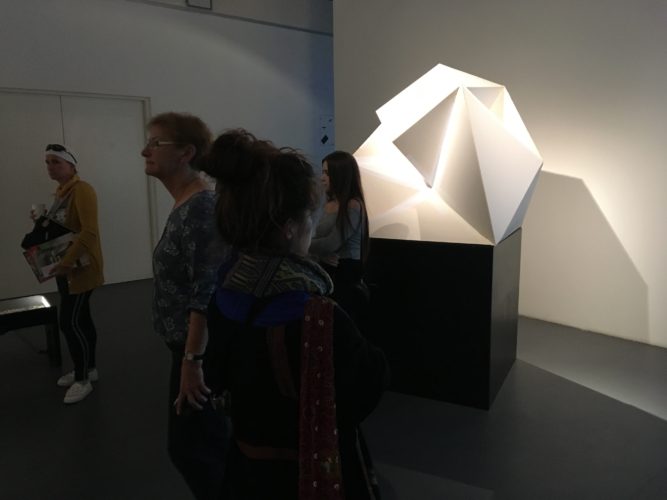
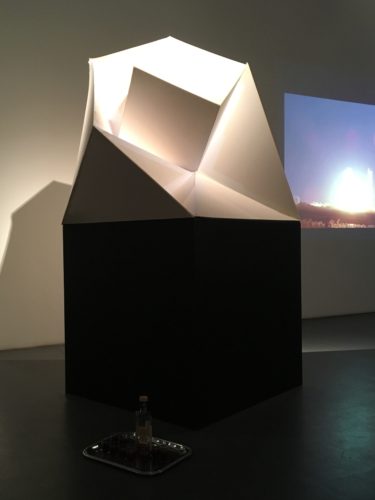
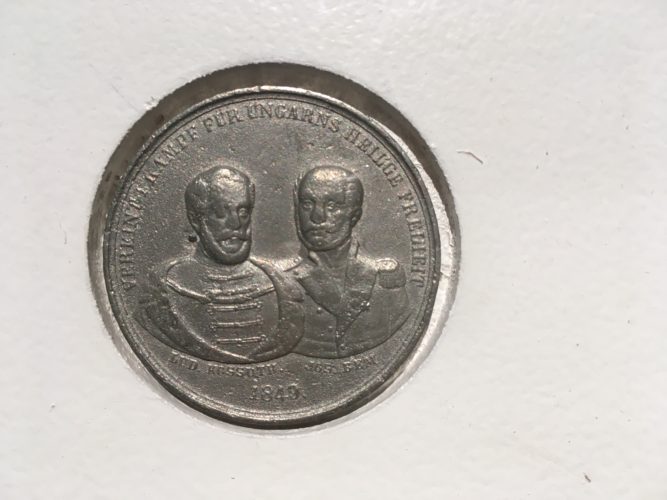
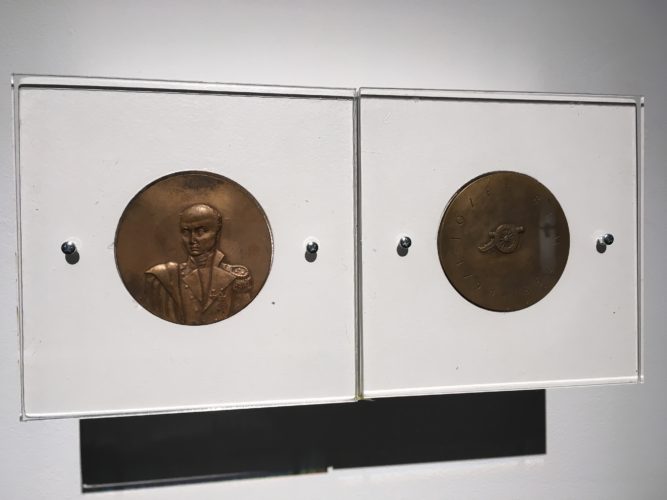
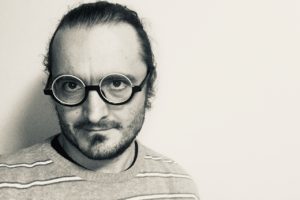
Comments are closed here.